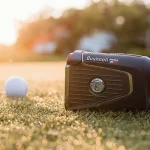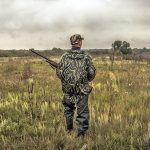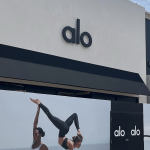While softgoods companies have been telling the green story for over a decade, and footwear manufacturers picked up the torch in the past two years, many hardgoods manufacturers have been limited in their green message by the technologies available. This year, that dividing line disappeared. Most notably, OR had its first backpacks and lifestyle bags designed out of recycled and recyclable materials.
A few years ago, Mike Pfotenhauer, the founder and head designer of Osprey challenged the company to find a way to build a daypack using recycled materials. At Winter Market, Osprey proudly displayed the result of a concerted effort to find materials and resources to accomplish that goal. Osprey Packs introduced the ReSource Series, featuring daypacks and courier bags made from a minimum of 70% recycled materials by content. Key components of the ReSource Series include: 100% recycled PET main body fabric using 100% recycled PET binding tape. Buckles, webbing, and mesh products were also constructed from recycled materials. The company is working on finding a reliable source of recycled zippers, which would dramatically increase the recycled content of the bags.
Gregory Packs was at the show with new leadership with Jim BoisDEnghien as its new North American sales manager and John Simons as its new president. The company is pushing two main categories of design, aspirations and its core technical line. In addition to the new leadership team, the company has brought on several new designers who are working towards their own line of environmentally-friendly packs and bags using sustainable materials. Finally, the company is trying to make backpack fitting systems universal, so that all backpackers know their size in the same way they know their shoe size.
Big Agnes continues to stir up the market with innovations that make you ask “why didnt I think of that?” This year the companys eye catcher was a simple three (or four) in one stuff-sack/dry-bag/pad pump(/backcountry beer bong) called the Pump House. The company also added several new models to its waterproof wheeled duffle line so that they offer sizes for any length trip. On the tent side, BA added a new bivvy “with room to breath” made with eVent fabric.
The company continues to have a well-balanced sales break-down with roughly 30% of sales coming from all three categories – pads, sleeping bags, and tents. BA continues to use DACs “cleaner” tent poles and is looking at other eco-alternatives for their current product line.
Crescent Moons use of magnesium components offered significant weight savings. Magnesium crampons were approximately 1/7th lighter than the stainless steel components used on earlier models. Consulting with aerospace engineers has helped the company learn to use magnesium and other lightweight metals. Like many outdoor manufacturers, Crescent Moon has made considerable progress in sourcing recycled and renewable raw materials used in the manufacturer of bindings, flotation, and buckles.
Atlas continued its support of the womens market by introducing the new Wrapp Pro Binding on the well-regarded Elektra Series. The company was also recognized for its efforts to introduce snowshoeing to new users. At the Outdoor Industry Association opening day breakfast, Atlass director of marketing Karen Righthand received the industrys Ambassador Award. The companys five year old Explore Winter Womens Workshop Program has introduced more than 8,000 women to the sport. More than a third of the participants were first time snowshoers.














